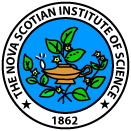
MEETINGS
MEMBERSHIP
PROCEEDINGS
ABSTRACTS
STUDENTS
LIBRARY
EXECUTIVE
BROCHURE
HALL OF FAME
HISTORY
LINKS
Monthly programmes and abstracts of meetings of the NSIS
|
1998–1999 1999–2000 2000–2001 2001–2002 |
2002–2003 2003–2004 2004–2005 2005–2006 |
Speaker List (1998–present)
1 October 2001
The Scientific Thinking of Sherlock Holmes
Dr. Richard Brown, Department of Psychology, Dalhousie UniversitySherlock Holmes was the first "scientific" detective in literary fiction. His name has become synonymous with careful observation, analysis and deduction. These are the values that make a good scientist. Holmes trained in Chemistry and was familiar with a number of analytic methods. This talk will examine the life of Sherlock Holmes and his creator, Sir Arthur Conan-Doyle, and the scientific methods of Sherlock Holmes. Dr. Brown will also examine some of the many examples of how scientists and writers have used ideas, quotations and logic from the Sherlock Holmes stories in their work.
5 November 2001 (Panel Discussion)
Oil and Gas Offshore Nova Scotia
Panelists:
-
Graham Williams and Hans Wielens - Geological Survey of Canada--Atlantic
How do oil and gas form?
-
Doug Gregory - Shell Canada Ltd.
How do companies explore for oil and gas?
-
Brent Austin - PanCanadian Energy
What elements do companies look for in assessing whether to develop a field?
-
M. Rafiqul Islam - Killam Professor of Petroleum Engineering, Dalhousie University
What is the future of petroleum research and development?
Why are there important gas reserves offshore Nova Scotia? Might there be important oil reserves? How do companies explore for and develop gas fields? What type of engineering infrastructure will we need as the industry develops? Join a public panel discussion on these and related issues.
3 December 2001
Show or Tell
Dr. Philip Cox, Faculty of Computer Science, Dalhousie UniversityThe last 20 years have seen a major change in the way in which we interact with computers. Instead of writing instructions line-by-line in fuzzy green letters on a black screen, we perform much more concrete, direct actions such as dragging an icon representing a file on to another icon representing a trash can, all in graphic detail and glorious colour.
The same concept, showing the computer what to do by drawing or directly manipulating pictures, is being applied with increasing frequency to the problem of creating software (programming). Research into Visual Programming has produced a wide variety of visual programming languages for many different kinds of user and many different problem domains. This talk provides a somewhat biased survey of this research area, illustrated by demonstrations of some visual programming systems.
7 January 2002
Reflections on Lichenology: Achievements over the Last Forty Years and Challenges for the Future
Dr. David Richardson, Biology Department, St. Mary's UniversityDr Richardson will present a personal view of developments in the study of lichens over the past 40 years, introducing not only the scientific issues but also some of the key players. He will cover topics as diverse as action studies of lichen reproduction; the role of sugar, fungi and algae; water and the ecophysiology of algae; and the repopulation of the lichen deserts around the Sudbury smelter stacks. He will discuss the importance of lichen conservation in the face of widespread clear-cutting and the importance of old growth forest in Nova Scotia. Finally, he will propose ways of attracting students and young scientists to the field of ecology and in particular lichenology.
4 February 2002 (Panel Discussion)
Testing the Waters--The Condition of our Lakes and Rivers
Panelists:-
Joseph Kerekes - Emeritus Research Scientist, Canadian Wildlife Service
What is the present condition of our inland waters?
-
Walton Watt - Aquatic ecologist; former Head of Freshwater Fish Habitat
Research, DFO
What can you do about problems (e.g. acidification) when you discover them?
-
Wesley White - Retired DFO Fisheries Biologist
How can we use models to predict problematic events?
-
Tony Blouin - Manager, Environmental Policy, Halifax Regional Municipality
What is the role of Government in these processes?
4 March 2002
From Replacement to Regeneration: Biomedical Engineering Designs the New You
Dr. J. Michael Lee, School of Biomedical Engineering, Dalhousie UniversitySince the 1960's, surgical treatment of disease and trauma has been revolutionized by the development of implantable devices: pacemakers, heart valves, hip replacements, intraocular lenses, artificial hearts and dental implants. While these devices have dramatically improved the length and quality of life for patients, the use of synthetic materials means that we can only incompletely replace the function of the damaged natural structures. At the beginning of the new millenium, "tissue engineering" is aiming to regenerate tissues and organs. With techniques like xenotransplantation, biohybrid organs, cybernetics, and stem cell regrowth all moving rapidly, new questions about the future of medical technology are emerging.
1 April 2002
Cancelled due to faculty strike at Dalhousie University, which prevented the speaker from preparing his lecture. Rescheduled to 7 October 2002.
6 May 2002 (Annual General Meeting)
Fishing for a Cure for Diabetes
Dr. James R. Wright, Department of Pathology, Dalhousie UniversityOne potential method for treating juvenile-onset diabetes is to transplant the islets, the portion of the pancreas that produces insulin. However, only a few thousand human donor pancreases are available annually and there are several million patients in North America that could potentially benefit from islet transplantation. Therefore, animals are being considered as potential sources for islet tissue. Islet tissue comprises only 1-2% of the mammalian pancreas and it is problematic "isolating" the islets from the remainder of the pancreas. Certain bony fish have discrete islet organs which can be easily harvested and, when transplanted into diabetic rodents, maintain normal blood sugar levels. Unfortunately, fish insulin is dissimilar to human insulin and, thus, these islets might not be suitable for transplantation into diabetic patients. To address this issue, our laboratory has genetically engineered fish with islets that secrete "humanized" insulin.
Please report broken links to the webmaster.